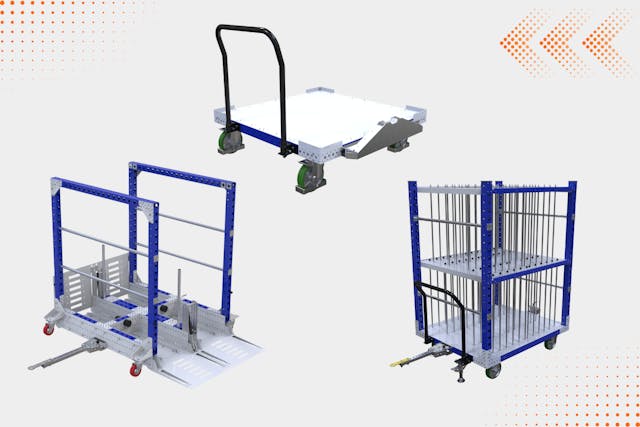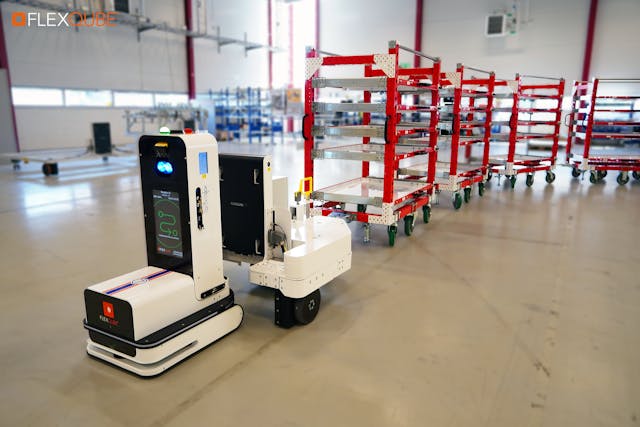What is an Autonomous Mobile Robot (AMR)?

Autonomous Mobile Robots (AMRs) are reshaping the way materials move through factories and warehouses. Designed to navigate and adapt without human intervention, AMRs are helping companies improve efficiency, reduce risks, and create safer, forklift-free environments.
What is an AMR? – An Introduction to Autonomous Mobile Robots
An Autonomous Mobile Robot is a self-driving vehicle built to transport goods inside a facility. Unlike traditional transport systems, AMRs don’t rely on fixed paths or extensive infrastructure. Instead, they use advanced sensors and software to move freely in dynamic environments.
Given the need for agile workflows, they are becoming vital in intralogistics because they bring flexibility, safety, and scalability to material handling. As warehouses and factories face growing demands, AMRs provide a future-proof solution that can adapt as operations evolve.
How do Autonomous Mobile Robots work?
Navigation technologies
AMRs rely on advanced navigation systems to move safely and efficiently through busy environments. Using a combination of sensors, cameras, and laser scanners, they continuously map and interpret their surroundings.
Unlike AGVs, which often depend on floor markings or magnetic strips, AMRs can dynamically adjust their route in real time. This allows them to operate in mixed traffic environments, avoid obstacles, and integrate smoothly into existing factory layouts without requiring extensive infrastructure changes.
Autonomous behavior
Beyond simple point-to-point movement, AMRs are designed to operate with a high level of autonomy. They can receive missions directly from operators, warehouse systems, or even be triggered by push buttons on the floor.
Once a task is assigned, the robot determines the most efficient path, adapts to changing conditions, and carries out the delivery without supervision. With built-in safety protocols, adaptive speed control, and the ability to interact with other traffic on the floor, they provide a reliable, human-friendly solution for material handling.
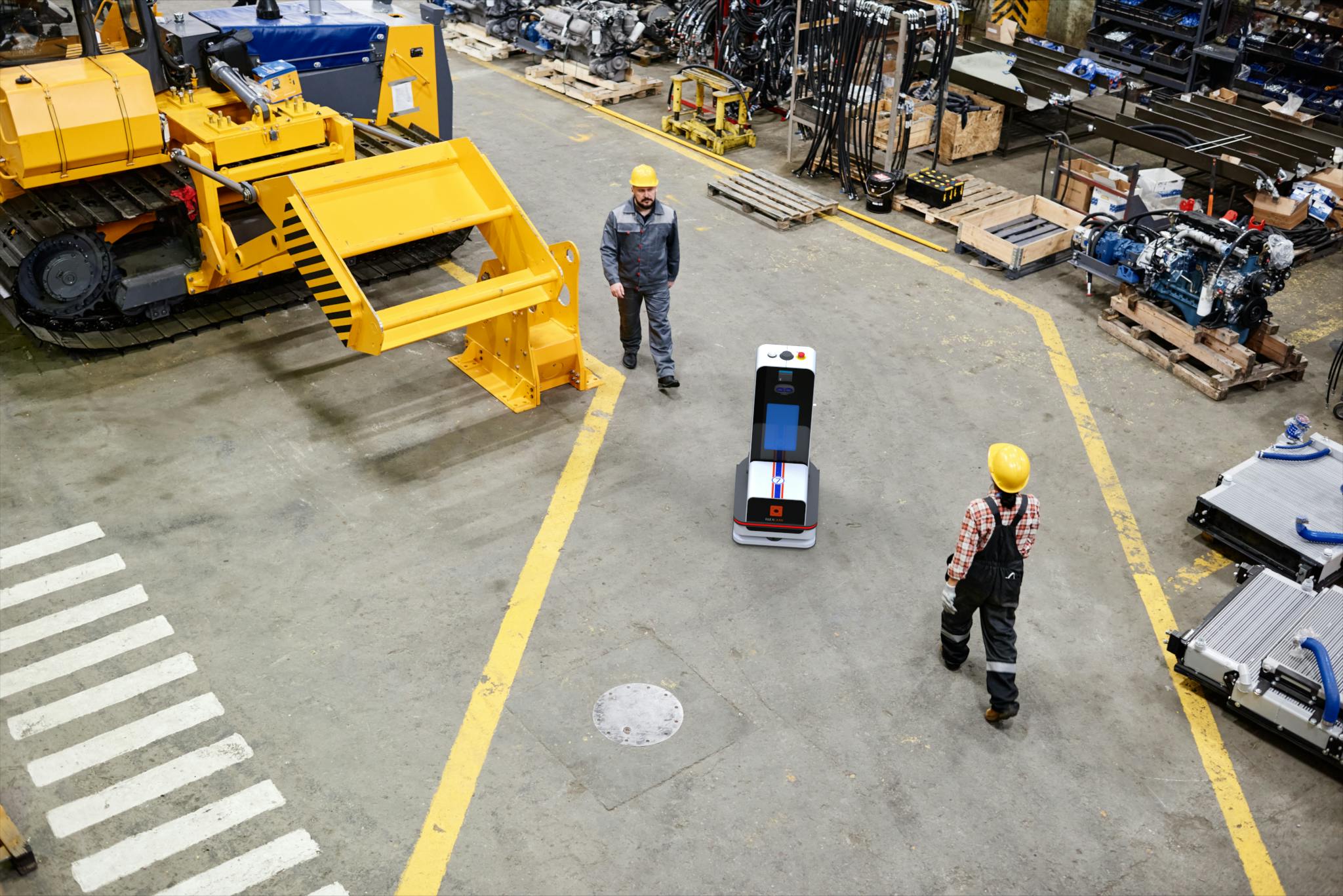
Benefits of using our AMRs for your warehouse
Flexible and modular
The FlexQube AMR System works on a “one-robot/multi-carrier” principle. With a single Navigator AMR that couples with an ecosystem of modular load carriers – that can be optimized for different sizes, shapes and payloads – the AMR system can transport a vast mix of materials. This flexibility lets companies move anything from small components to heavy racks without having to swap out the robot itself.
Safe and reliable
Safety is built into every part of the system. A 360-degree safety field automatically adapts to the size and weight of the load to ensure people and goods remain protected. By reducing the number of forklifts in busy areas, they also help lower the risk of accidents in the workplace.
Heavy-duty performance
Even though they take up very little floor space, the FlexQube AMR system is designed for heavy-duty work. It can move loads of up to 5,500 lbs, giving them the strength to handle large and bulky racks such as seats, doors and other oversized components that are difficult or time-consuming to move with mechanical tugger trains or manual carts.
Efficient and cost-effective
Our AMR systems are designed to be durable and low-maintenance, so you don’t have to worry about frequent repairs. With wireless in-process charging, just one minute of charging gives 15 minutes of operation. By cutting labor costs and reducing forklift use, most customers see a return on their investment in just a few years, depending on the use case.
AMR vs AGV: what’s the difference?
At FlexQube, we offer both AMRs and AGVs. While both are used to transport materials, they operate in fundamentally different ways. Let us go through some of the principal differences.
Applications of Autonomous Mobile Robots
AMRs are used across industries to automate repetitive and labor-intensive transport tasks. They are well-suited for moving racks, pallets, or kits directly to assembly lines, shuttling materials between storage and production areas, and handling bulky components that would otherwise require forklifts.
By combining AMRs with modular carriers, these systems can handle a diverse number of tasks, ranging from transporting automotive seats and doors to managing general warehouse replenishment. At the same time, they help reduce the manual workload on employees, allowing them to concentrate on activities that require human judgment.
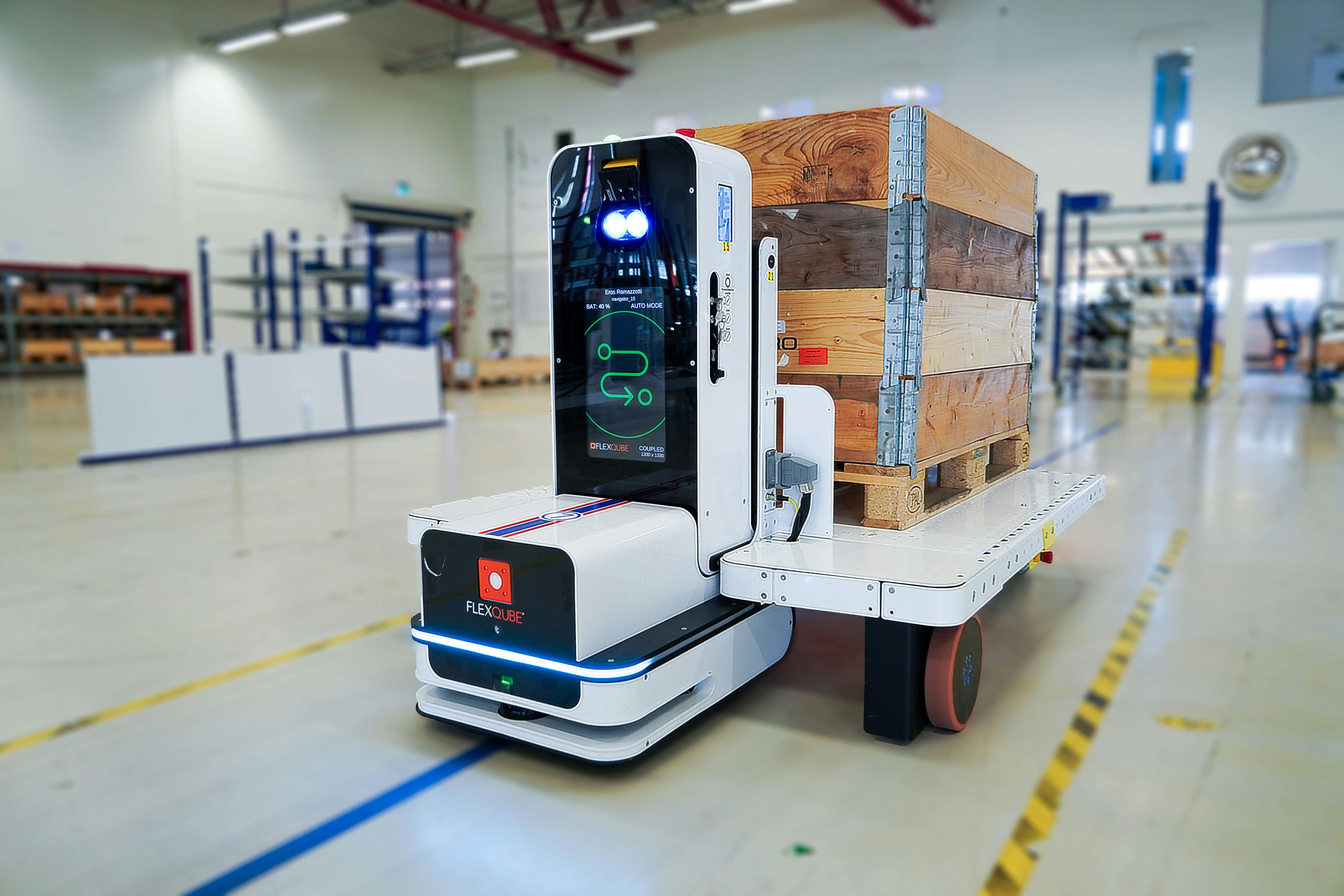
Factors to consider in AMR integration
AMRs are designed to become an integral part of your workflow. Thinking about how they fit, how much they cost, and how people interact with them makes the rollout smoother and more effective.
Operational fit and system compatibility
AMRs should work seamlessly alongside your current workflows, equipment, and software. Make sure they integrate with warehouse or enterprise management systems (WMS/ERP) so missions can be triggered and tracked without manual intervention.
Safety and compliance
When AMRs share their workspace with people, following international safety standards is a top priority. Pay attention to how the system monitors speed, detects obstacles in real time, and carries out emergency stops, in order to safeguard both workers and inventory.
Cost and return on investment
Don’t forget to think beyond the purchase price. Look at the full cost of ownership, including maintenance, charging, and reduced forklift use, and weigh it against the benefits in productivity, safety, and labor savings. Most businesses see ROI within only a couple of years.
People and change management
How well AMRs work often comes down to the people using them. By providing user-friendly systems, clear training, and open dialogue, employees can adapt quickly and build trust. Getting logistics teams involved early makes the transition much easier for everyone.
The future of AMRs in industry 4.0
AI and Machine Learning improvements
AMRs are becoming a cornerstone of Industry 4.0 strategies, as they are transforming how materials move and operations scale. Advances in AI and machine learning are making them more autonomous and predictive, enabling smarter route planning and improved uptime.
Collaboration and data-driven efficiency
Human collaboration, or “cobotics”, is expanding as AMRs take on support roles alongside operators, letting teams focus on higher-value tasks. At the same time, AMRs generate valuable insights into workflows, efficiency, and bottlenecks, helping companies optimize their operations.
Why companies choose FlexQube
The answer is simple: our AMR System is smart, safe, scalable, and successful. By combining heavy-duty performance with modular flexibility, we offer a solution that is simple to implement and proven to deliver ROI in less than two years. With technology partnerships and a focus on human-friendly design, we make material handling accessible, efficient, and future-proof.
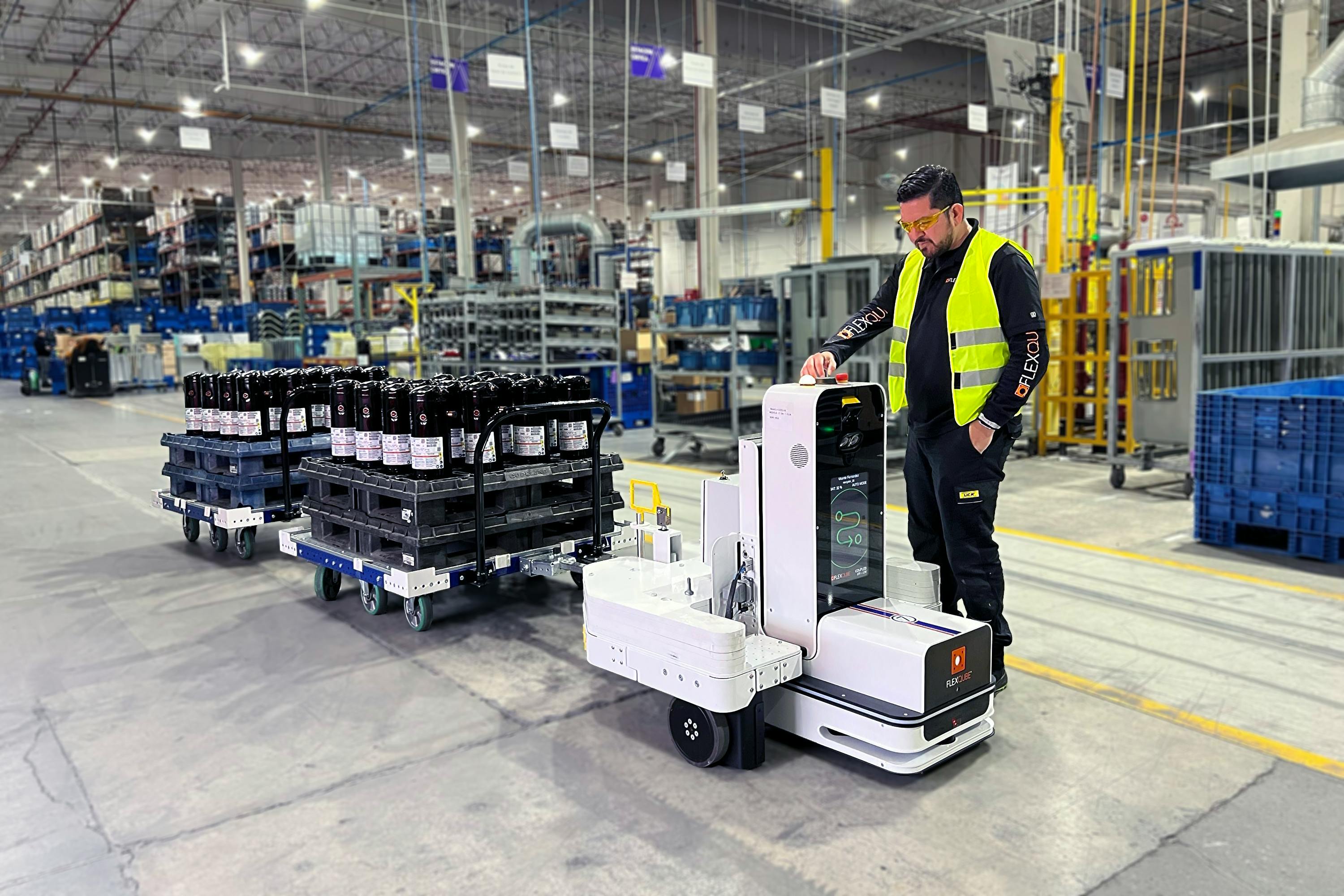
Is an AMR right for your operation?
If your business is looking to reduce forklift dependency, improve safety, and gain efficiency in material handling, AMRs are a proven path forward. The FlexQube AMR System delivers the flexibility, scalability, and reliability you need to future-proof your operations.

